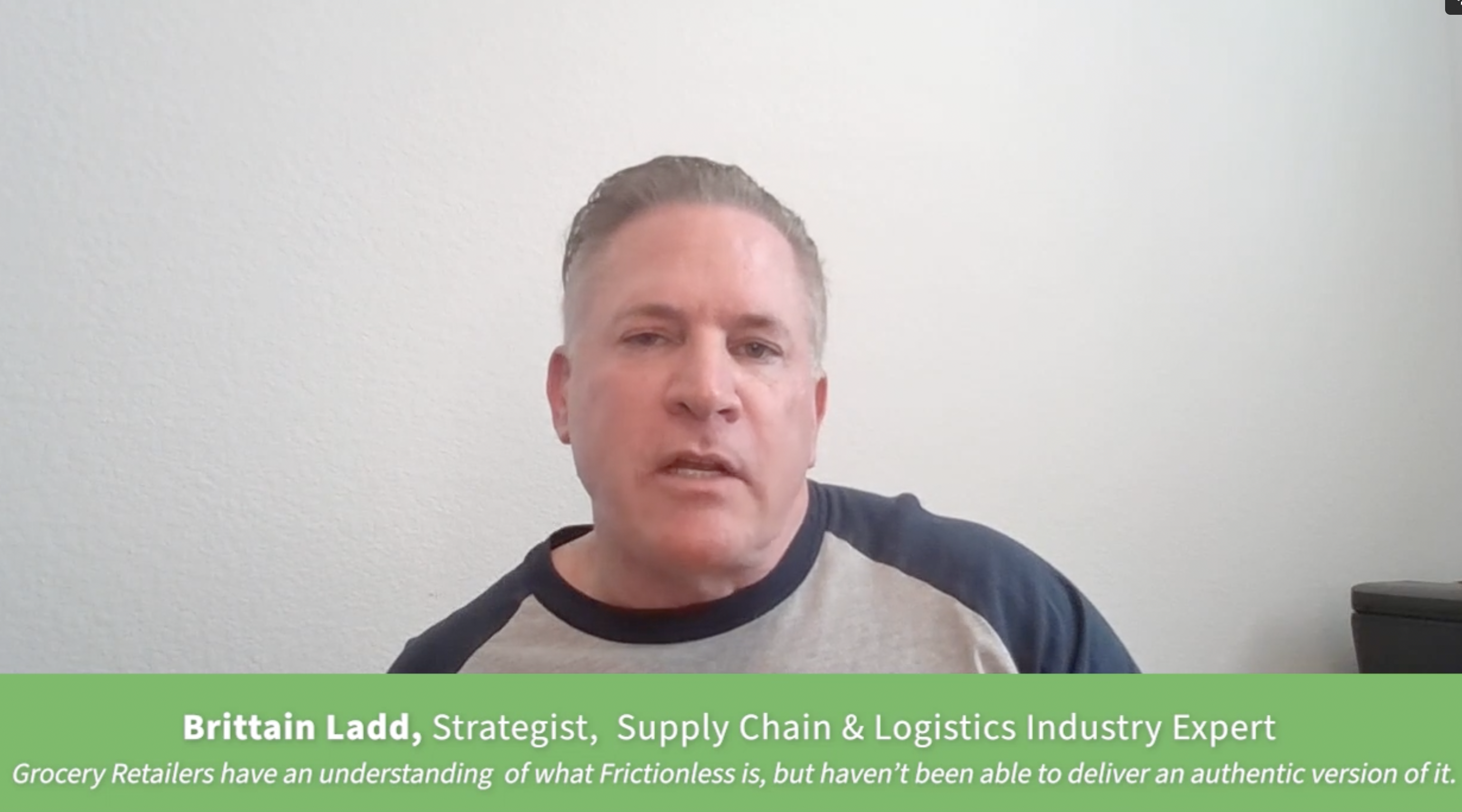Tag: Millennials
By Spencer Price, co-founder and CEO of Halla
Like most other Millennial and Gen Z Americans, I can’t remember a time without the internet. My generation grew up digitally connected. It didn’t take COVID-19 to convince us to shop online. And yet, despite our comfort shopping online, Gen Z and Millennials reported the lowest satisfaction rate amongst all online grocery shoppers in 2020. We are—in the eyes of our elders, at least—“hard to please.”
If you are in the grocery business, you already know that this is actually a wonderful opportunity. Millennial and Gen Z shoppers stand 150 million strong and contribute hundreds of billions of dollars to annual retail spending. We will soon surpass GenX and Baby Boomers both in shopper volume and spending power.
But it is about much more than that. When you meet the high expectations of Millennial and Gen Z shoppers, you will simultaneously delight Gen X and Boomers as well. While my suggestions below focus on how to capture my generation’s market, I encourage you to think about how these improvements in grocery retail will improve customer experience for all of your shoppers.
We have learned to have high expectations
As a grocery industry insider, I understand why Millennial and Gen Z’s high expectations might seem unreasonable to some. The store item count, transaction basket sizes, fresh requirements, in-aisle order picking, and other complexities of grocery create unique online shopping challenges not faced by other retail categories. But you have to understand—we grew up with the likes of Zappos and Amazon. Hyper-convenient online shopping experiences are the well-established norm for us. Getting exactly what we ordered, delivered in a timely manner is how virtually every other online retail experience we engage in already works.
Grocers need to meet our generation of shoppers where we already are in our relationship with retail. We know what we want, we have virtually unlimited choices online, and we have learned that “getting what you want is always just a few clicks away.”
So what do Millennial and Gen Z shoppers want from online grocery—and how can you give it to them?
1. Reliability: There is nothing more disappointing than “conveniently” ordering your groceries online, only to find that your order could not be delivered or picked up at the scheduled time, or worse yet—that some items could not be fulfilled at all. If we have to go to a physical store or place another order with someone else because you didn’t come through, we won’t soon forget it. In fact, according to a 2020 McKinsey study, one in five shoppers claim that they have switched grocers due to such fulfillment fails. Order fulfillment needs to be as reliable as possible because we’re not as flexible with our food choices as other generations. We want grocers to use proactive technology that ensures efficient picking and delivery, accurately predicts our needs and makes our lives convenient. The only alternative— back-and-forth texting between picker and shopper—annoys us, delays our orders, and costs you valuable picker time.
2. Frictionless shopping: Second only to fulfillment fails in the drivers of online grocery dissatisfaction amongst my generation’s shoppers is the clunky experience itself. Like most other consumers, what we like about shopping in-store is the feeling of control of our choices and the joy of discovery of delicious foods and cooking ideas. But online, we instead endure tedious scrolling through products we don’t want, narrow filters that don’t take into account our specific dietary needs, an awkward search process that produces irrelevant results, and a dull, impersonal experience overall. We’re not strangers to bad UI/UX, but we also know how amazing a good ecommerce experience can be. I’m talking about remembering who we are the moment we log in, prioritizing search results according to our personal preferences, making recommendations and offering promotions that genuinely help us discover products that match our tastes, and offering to prefill our cart with frequently purchased items. Most of these are already table stakes in ecommerce, and part of how we judge the experience. As ecommerce continues to evolve, our expectations are going to rise up with it.
3. Mobile-friendliness: Mobile is the characteristic that most singularly defines the relationship of Millennials/Gen Z with grocery shopping. 93% of Americans aged 18-39 use a smartphone, and 71% of Millennial/GenZ shoppers (vs. 44% of Boomers) are comfortable using digital devices in their grocery shopping experience. We use mobile phones to look up recipes, scan reviews, find products, and compare prices, even while shopping in physical stores. Whereas our parents’ generation may still write their shopping list with pen and paper, we input ours to our phones. We “check-in” and “tap to buy” on social media, use grocery apps, take advantage of mobile scan-and-go options, and use digital payment systems like Venmo and Apple Pay. We welcome digital coupons and rewards from mobile-savvy companies like Honey and Fetch Rewards.
To satisfy Millennial and Gen Z shoppers, you need to make sure that your omni-channel grocery experience is heavily optimized for mobile devices. Our tech literacy presents you with the opportunity to personalize our experience, in real-time, wherever we are. We are on our phones, so—voila— take advantage! Present digital coupons as we walk through a given aisle. Send us a “Did you forget?” notification from our online shopping lists. Give us free wi-fi in-store, incent us to promote you on social media, and make recommendations for items that complement what is already in our scan-and-go cart.
4. Consciousness: American Millennials and Gen Z are the nation’s most socially, ethically, environmentally, and health-conscious generations. We represent the bulk of America’s vegetarians and vegans. We choose foods that are organic, free-range, ethically-sourced, and environmentally sustainable in greater numbers than any other generation, and we are willing to pay more for it. We also care about racial and gender diversity, fair employment practice, and other social issues. These ideas are not just lip service for us; This is what we expect from the companies we do business with—and we speak with our wallets. Show us products that run counter to our values and we will notice that you are not listening. I recently ordered a dozen Vital Farms pasture-raised eggs, for example, but instead received factory-farmed AA white eggs. It was so tone-deaf that I immediately decided to shop elsewhere next time. Failing to recognize and cater to Millennial/GenZ values in grocery search, recommendations, and substitutions does not help your customers—it only helps your competitors.
Meeting Millennial/Gen Z expectations is a huge growth opportunity
Although pleasing Millennials and Gen Z may sometimes feel like a sisyphean undertaking, keep in mind that we are also much more accepting of subscription programs and meal kits, new shopping and delivery models, and even new products and brands. Take services like Hello Fresh, for example, whose revenue is predicted to more than double this year. This poses a real threat to conventional grocers. (When I’ve used it, my monthly spend with my local grocer declines by 60%). Conventional grocers could mimic these intimate and lifestyle-tailored models successfully. Why not curate and re-market products you already have on the shelves, using what you already know about me, and lock in my loyalty to you, instead of to the competition?
You can see how meeting the high expectations of Millennials and Gen Z can actually be a great source of growth and loyalty. But to be clear, I’m not suggesting that you change your entire strategy to cater exclusively to these generations of shoppers. Actually, meeting the expectations I’ve highlighted here will boost lift and loyalty across all generations of shoppers.
Considered in this context, Millennial/Gen Z dissatisfaction with online grocery shopping is quite good news for grocers. We are telling you exactly what we want, and how you can give it to us. And in doing so, we are telling you how you can create a competitive advantage with all of your shoppers. The question is—”Will you listen?”







